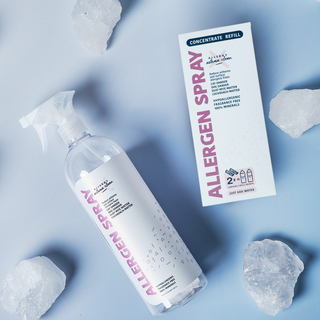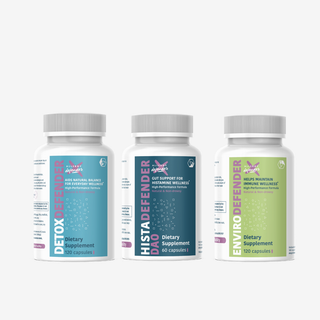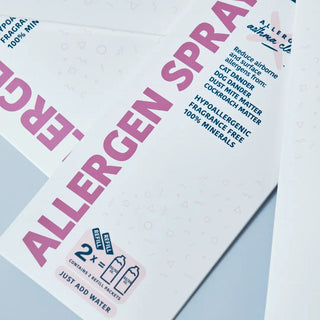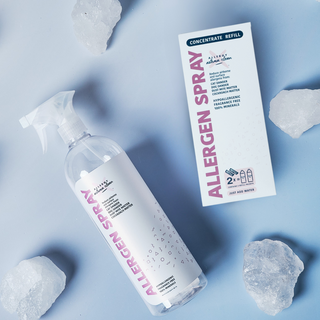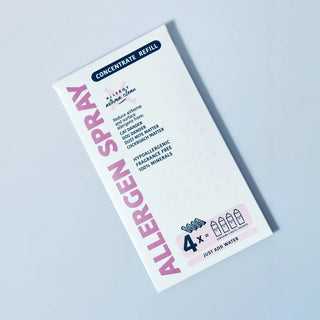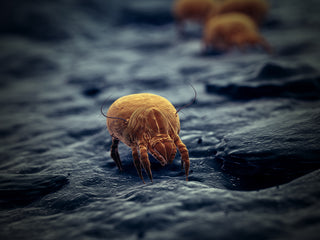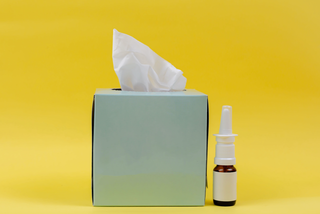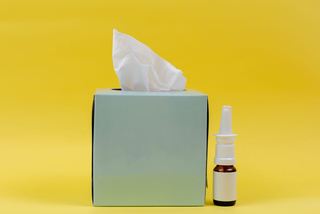Dealing with histamine intolerance? Identifying high histamine content foods is key.
Key Takeaways for High Histamine Content Foods
-
Histamine intolerance occurs when the body can’t break down histamine effectively, leading to symptoms that can be managed through dietary adjustments.
-
Identifying and avoiding high histamine foods like aged cheeses, processed meats, fermented products, and certain fruits and vegetables is essential for managing intolerance.
-
Consulting with a healthcare professional can provide accurate diagnosis and tailored dietary guidance, helping individuals effectively manage histamine intolerance.
Understanding Histamine and Its Role
Histamine is an intriguing compound with various functions within the human body. It not only plays a crucial role in immune defense, warding off pathogens, but it also has a hand in managing sleep and cognitive processes. As a messenger molecule, histamine enables interactions amongst immune cells and mainly resides in mast cells and basophils. Upon its release, histamine’s impact varies according to the receptors it engages.
Some individuals struggle with effectively processing histamine due to what’s known as histamine intolerance. This condition arises when there’s an inability to adequately metabolize histamine, leading to accumulation that provokes numerous symptoms. By altering dietary intake towards low-histamine options while steering clear of foods known to provoke histamine liberation from cells, one can navigate through these sensitivities.
The question remains: what incites our bodies’ mast cells into discharging their stored supply of this substance? A variety of ingestible items along with specific environmental conditions can stimulate such reactions from mast cell populations—spurring on unwelcome symptomatology for those affected by heightened sensitivity toward such triggers. Recognizing these activating factors is essential for controlling internal concentrations of this mediator chemical so as to sustain improved well-being.
Navigating your path involves more than just sidestepping foods rich in this amine. It demands insight into how your system manages its presence and making judicious decisions aimed at bolstering personal wellness based upon said understanding.
Identifying High Histamine Foods
Identifying foods that are high in histamine is essential if you think you may have a histamine intolerance. Foods notorious for their high histamine content, such as aged cheeses, processed meats, and fermented goods, should be recognized as potential triggers. Some fruits and vegetables might also prompt the release of histamine, so being aware of what to steer clear of is important.
To better manage your symptoms associated with this condition, it’s vital to comprehend how various foods can influence your body’s histamine levels. Whether it’s cured or aged types of meat or specific kinds of legumes and nuts, pinpointing these items plays a pivotal role in adopting a diet low in histamines.
Foods High in Histamine
Meats and Fish
-
Smoked, cured, and aged meats (bacon, salami, ham, sausages)
-
Canned and semi-preserved fish
-
Mackerel, sardines, tuna, herring
-
Fish not gutted within 30 minutes of catch
Dairy Products
Fruits and Vegetables
-
Eggplant
-
Spinach
-
Tomatoes
-
Avocado
-
Mushrooms
-
Pineapple
-
Strawberries
-
Citrus fruits
-
Dried fruits (apricots, prunes, dates, figs, raisins)
Fermented Foods
-
Sauerkraut
-
Kimchi
-
Kombucha
-
Pickled or canned foods
Condiments and Sauces
-
Vinegar
-
Soy sauce
-
Ketchup
-
Mayonnaise
-
Balsamic vinegar
Nuts and Seeds
-
Walnuts
-
Cashews
-
Peanuts
-
Sunflower seeds
Other Foods
-
Chocolate and cocoa-based products
-
Seitan1
-
Ready meals1
-
Salty snacks with preservatives
-
Uncooked egg whites
Factors Affecting Histamine Levels in Food
Several elements can affect histamine levels in food, such as the methods of processing, the aging process, and fermentation. Foods that have been processed or aged to a significant degree often exhibit elevated levels of histamine. This is commonly seen in items like kimchi and miso. Preserving foods through techniques such as smoking or canning may also lead to an increase in their histamine content.
For individuals managing histamine intolerance, it’s essential to consume foods that are whole and minimally processed. Being aware of how various factors influence the levels of histamine assists with making informed dietary decisions aimed at circumventing symptoms related to intolerance.
Spoilage and Storage
Incorrect storage practices can result in elevated histamine production, particularly in fish products. Fish that isn’t adequately preserved may accumulate histamine to levels exceeding what is considered safe for eating. This surge in histamine levels is often the consequence of bacterial proliferation, especially noticeable within fish varieties rich in histidine.
It’s vital to maintain proper storage techniques to control the amount of histamine found in food items. By correctly storing fish and similar perishable goods, one can help inhibit excessive accumulation of histamines and thus decrease the likelihood of experiencing symptoms associated with histamine intolerance.
Cooking Methods
The method by which food is cooked can have a considerable impact on its histamine levels. Essential points to note include:
-
The act of frying or grilling usually increases the amount of histamine present in food.
-
Choosing to boil or steam your dishes may lead to a reduction in their histamine content.
-
When foods are subjected to high-temperature cooking, it might result in the creation of more biogenic amines, among them histamine.
For individuals dealing with an intolerance to histamine, selecting boiling or steaming as opposed to frying could be beneficial for maintaining lower amounts of this substance within your diet. Such cooking techniques not only maintain the nutritional integrity of ingredients, but also help keep under control the concentration of histamines they contain.
Symptoms of Histamine Intolerance
Histamine intolerance is associated with a range of symptoms that can complicate the diagnosis process. These include frequent headaches, feelings of dizziness, various digestive problems, a persistently runny nose, skin rashes and hives, and swelling around the lips, tongue, or throat area. The presence of these symptoms can drastically reduce one’s quality of life. It’s crucial to acknowledge and manage them effectively.
Keeping a detailed record in the form of a food diary may assist you in monitoring your daily diet alongside any resultant symptoms, which could lead to pinpointing specific food intolerances. Being aware of all possible signs linked to histamine intolerance is vital for taking appropriate measures to manage this condition efficiently.
Digestive Symptoms
Bloating and diarrhea are key signs that someone may be suffering from histamine intolerance. The consumption of specific fruits, including papaya and cherries, along with legumes such as chickpeas, might aggravate these symptoms because they contain substances similar to histamine or promote the release of histamine. Nuts have been known to prompt the release of histamine, potentially intensifying digestive issues.
Should you find yourself dealing with these types of digestive problems, it is crucial to exercise caution when eating these foods. Recognizing and steering clear of items that trigger your symptoms can assist in alleviating discomfort and enhancing your overall health.
Respiratory and Skin Reactions
Individuals with histamine intolerance may experience respiratory problems, which include nasal blockage and challenges in breathing, as well as dermatological issues such as redness of the skin and hives. These symptoms are often a result of heightened levels of histamine that can provoke noticeable and potentially troubling skin reactions.
Being aware of these symptoms and understanding their association with histamine levels is crucial for effective management. Through dietary adjustments that involve steering clear of foods high in histamine, it’s possible to diminish the frequency at which these respiratory conditions and dermal responses occur.
Diagnosing Histamine Intolerance
The process of diagnosing histamine intolerance typically involves assessing a comprehensive history of symptoms, dietary patterns, and existing health issues and conducting blood tests to measure levels of diamine oxidase or histamine. Medical practitioners may also rule out other conditions, such as allergies and gastrointestinal problems that exhibit similar signs. Given the broad spectrum of possible manifestations linked with histamine intolerance, it is vital for an accurate diagnosis to be established.
In cases where there is suspicion of histamine intolerance, a healthcare professional might suggest following an elimination diet or adhering to a low-histamine diet over a period ranging from two to four weeks. Keeping a detailed record in the form of a symptom diary could assist in pinpointing any potential food intolerances.
Engaging with medical professionals plays an essential role when aiming for correct identification and efficient handling of histamine intolerance. These experts offer tailored advice and continuous support throughout the diagnostic journey.
Managing Histamine Intolerance Through Diet
The primary objective of adhering to a low histamine diet is to decrease the intake of histamine in order to alleviate associated symptoms. Health professionals typically recommend a methodical modification in eating habits, which involves slowly adding foods back into the diet to pinpoint specific triggers. Fresh and properly cooked eggs are often seen as presenting a lower risk for those on this diet plan.
By adopting a diet that consists of low histamine foods, individuals can greatly enhance their overall well-being by diminishing discomfort and better controlling their sensitivity to histamine. Making educated decisions about what one eats is vital when following low histamine diets, with awareness being key in understanding how various foods affect one’s condition.
Low Histamine Foods to Include
A diet low in histamine focuses on consuming fresh and minimally processed items to assist in the control of histamine levels. By integrating a diverse selection of these foods, you can achieve a well-rounded and nutrient-rich diet while steering clear of the discomfort associated with histamine intolerance.
To enhance your meals without raising histamine levels, consider incorporating these herbs and spices that are recognized for their low-histamine content.
-
Basil
-
Parsley
-
Cilantro
-
Thyme
-
Rosemary
-
Oregano
By including grains such as quinoa, oats, millet, and various rice varieties including white rice, brown rice, basmati rice, and jasmine rice into your eating routine can be beneficial for adhering to a low-histamine dietary plan. These grains supply vital nutrients yet do not increase histamine quantities, which is advantageous for individuals coping with issues related to histaminergic regulation.
Fresh Meats and Fish
Choosing fresh chicken, turkey, beef, lamb, and pork provides options for low-histamine meat, which are ideal for individuals trying to manage histamine intolerance. It is crucial that these meats remain unprocessed and non-aged in order to maintain minimal histamine levels.
To significantly lower the intake of histamine and prevent associated symptoms, it’s advisable to select fresh rather than processed meats and fish. This strategy guarantees protein sources that are both nutritious and safe for those with concerns about their histamine levels.
Non-Fermented Dairy Alternatives
Individuals who experience histamine sensitivity can opt for non-fermented dairy substitutes like coconut milk, rice milk, and almond milk. These options supply the essential nutrients without containing the elevated levels of histamine typically present in fermented dairy items.
Incorporating these non-dairy substitutes into one’s diet is an effective method to diminish the consumption of histamines and prevent associated discomforts, thereby providing a feasible solution for those looking to consume products akin to dairy while coping with their histamine intolerance.
Safe Fruits and Vegetables
Apples, pears, and mangoes are examples of fruits that contain low levels of histamine. Blueberries, melons, and cherries are also considered to be in the same category. For those dealing with histamine intolerance, these tasty options can be safely consumed. When it comes to vegetables low in histamine, you have choices such as zucchini, carrots, cucumbers, and bell peppers. Along with lettuce, peas, cabbage, green beans, and cauliflower.
To prevent triggering symptoms associated with histamine intolerance while still getting vital nutrients essential for health, integrate these well tolerated fruits and vegetables into your eating habits. They not only allow for a diet richly varied and nutritious, but they also avoid exacerbating issues related to histamine sensitivity.
The Importance of Consulting a Healthcare Professional
If you think you might have histamine intolerance, it’s crucial to seek advice from a healthcare provider. They are equipped to evaluate your medical history and distinguish between histamine intolerance and other conditions that present similar symptoms, which is vital for proper diagnosis and treatment.
Should the need arise, your healthcare provider can direct you to specialists in allergies or gastrointestinal issues for additional investigation. Collaborating with a dietitian is beneficial when dealing with food limitations. They offer personalized guidance on dietary matters that include nuts among potential provocateurs. Professional assistance is key in precisely diagnosing and efficiently controlling histamine intolerance.
Summary
To effectively handle histamine intolerance, it’s essential to become familiar with foods that contain high levels of histamine, pinpoint the associated symptoms, and seek proper medical advice for a reliable diagnosis and recommendations. Adhering to a diet low in histamine can greatly alleviate the discomfort caused by this condition and enhance your overall well-being.
Dealing with histamine intolerance can seem daunting initially. Armed with appropriate information and professional assistance, controlling it is entirely feasible. Remain educated on the subject matter, work closely with healthcare experts when needed, and adjust your eating habits accordingly to partake in meals free from concerns related to excess histamine.
Frequently Asked Questions
What are the symptoms of high histamine?
If you’re experiencing headaches, nasal congestion, fatigue, hives, or digestive issues, it could be a sign of high histamine levels.
Paying attention to these symptoms can help you manage your health better.
What are the common symptoms of histamine intolerance?
If you have histamine intolerance, look for symptoms such as headaches, dizziness, digestive troubles, and skin reactions such as rashes and hives.
It’s important to recognize these signs to manage your health better.
How can I diagnose histamine intolerance?
To diagnose histamine intolerance, start by tracking your symptoms and dietary habits, and consider getting blood tests for DAO enzyme levels or histamine.
A trial of a low histamine diet can also help confirm the issue.
Which foods are high in histamine?
Foods high in histamine include aged cheeses, processed meats, fermented products, certain fruits and vegetables, legumes, and nuts.
If you’re sensitive to histamine, it’s best to limit these options.

